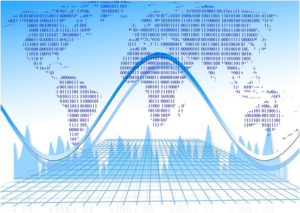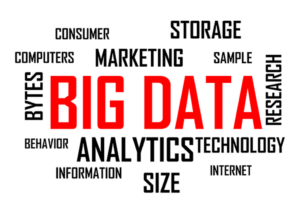
The future of technology is largely dependent on data and its analysis. Many things are now connected to the internet, thanks to the help of service providers using advanced technologies. An article on SD-WAN reveals how far computer hardware has come.
These things transmit the data they collect back for analysis. The aim is to use this data to learn about trends and patterns that can be used to make a positive impact upon every aspect of human life.
Two notable terms that arise from this discussion are Big Data and The Internet of Things (IoT). While they aren’t the same thing, you really can’t talk about one without the other. In fact, big data is like fuel that keeps the IoT running.
Today, we’ll be taking a closer look of how big data is helping the IoT.

Big Data and IoT go Hand-in-hand
According to one study, the IoT will generate 4.4 trillion GB of data the world over. While this number is incredibly high, it makes sense. You know why?
By 2020, billions of objects and devices will have some sort of connection to the internet. All of them will be collecting, analyzing, transmitting, and sharing data in real time. If this data was absent, IoT devices wouldn’t have the same functions and abilities that have made them so popular across the world.
Big Data and IoT Impact Each Other
The more the IoT grows, the higher the demands are placed on the big data capabilities of your business. Conventional data-storage technology, for instance, is getting overwhelmed. This has led to the development of more advanced solutions to handle mounting workloads.
With this, you may need to update your company’s big data-storage infrastructure or invest in cloud services. Generally, you will have to change your mindset and business strategy in order to keep up with the changes brought about by IoT and Big Data.
Many Organizations Capitalize on the Close Link between IoT and Big Data
Many organizations around the world are putting the IoT and Big Data to good use. They include:
- Transportation Companies – These companies have installed IoT sensors on their vehicles. As such, they can know where their vehicles are at any given time. Likewise, they can monitor fuel efficiency, delivery routes, as well as how drivers use their time. All this is geared towards enhancing business efficiency.
- Manufacturing Companies – The companies install IoT sensors in their equipment, which helps them gather crucial operation data. With this, they can have a comprehensive look at how they are performing. This enables them to identify which machines need attention before things get out of hand. Consequently, they save money that could otherwise be spent on equipment replacements.
- Wearable Technology – Objects such as fitness bands are also part of the IoT. They take your health data, give you calculations on your fitness status, as well as track and notify you on the progress towards given goals.
Another great example of the IoT and Big Data application is the Disney World’s MagicBand. This band allows you to check in at posts, which are connected as well. It keeps track of meals, accommodation, park admission, etc. This is geared towards enhancing convenience.
Final Thoughts
The IoT and Big Data are intertwined. They go hand-in-hand and work very well together. The two are growing at a remarkable pace, and both are reliant on the success of the other.
In fact, the two will become more entangled as the amount of data across the globe grows. The world may be running on data today, but soon it will become completely engrossed in the IoT.

